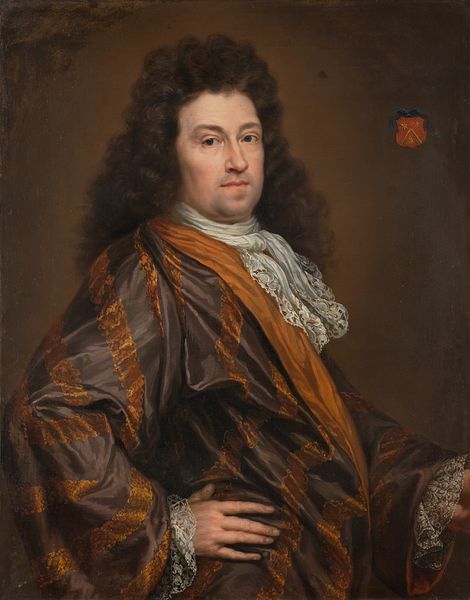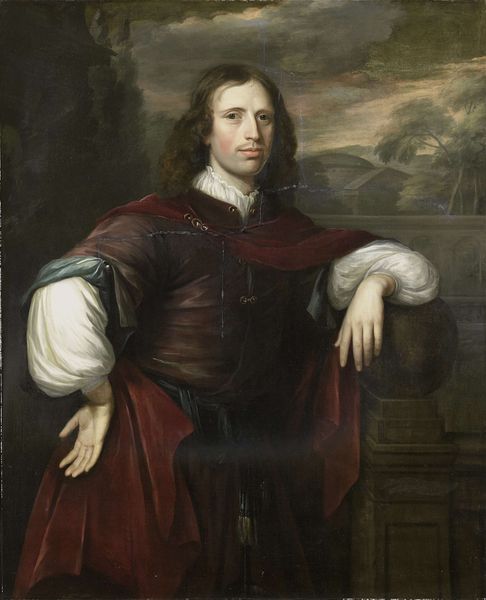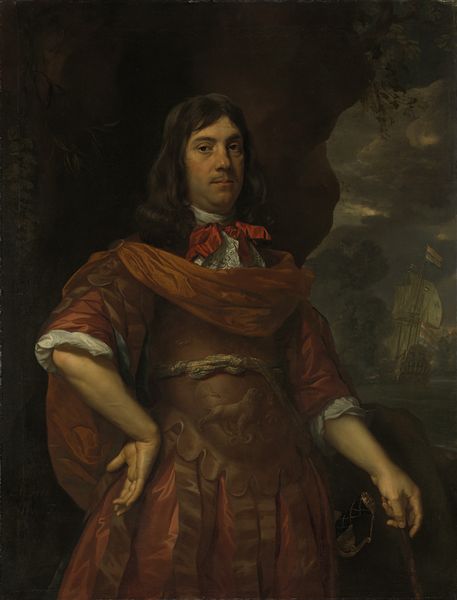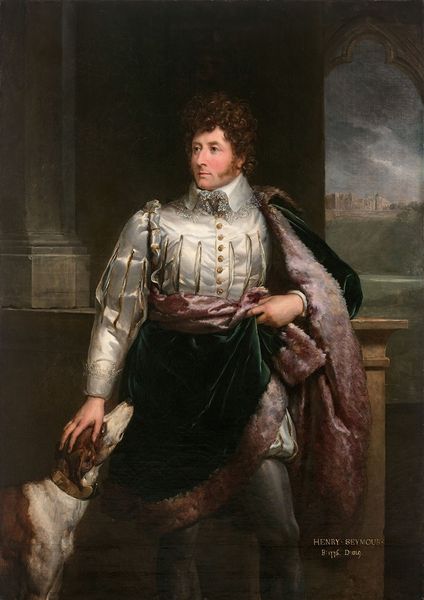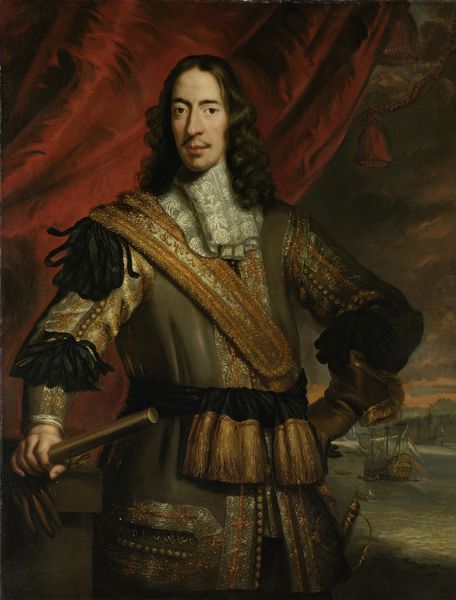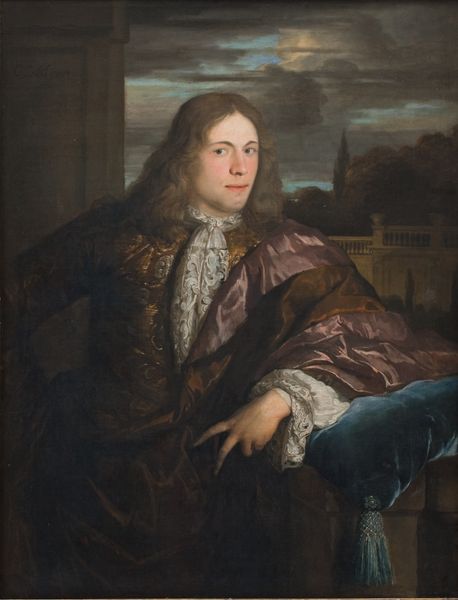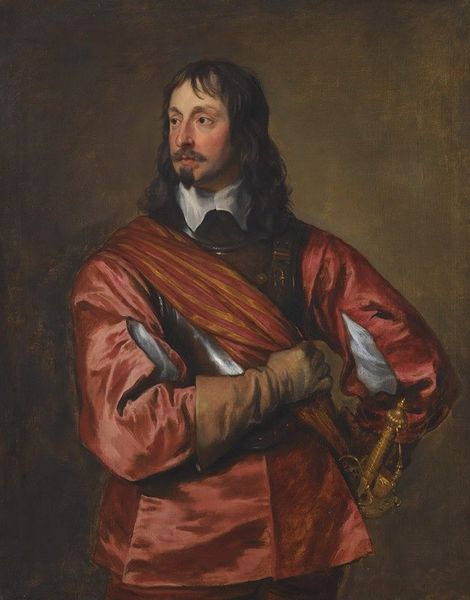
painting, oil-paint
#
portrait
#
baroque
#
painting
#
oil-paint
#
figuration
Dimensions: height 100 cm, width 81.5 cm, depth 6.8 cm
Copyright: Rijks Museum: Open Domain
Editor: This is a captivating "Portrait of a Captain" painted in 1668 by Nicolaas Wieringa, using oil paints. I'm struck by how he's holding that instrument, and how confident he seems. What do you see in this piece? Curator: That instrument, a pair of dividers, isn't merely a tool; it's a potent symbol. In art of this era, dividers often represented navigation, mathematical precision, and even intellectual prowess. Given his profession, do you think there could be more to it? Editor: Perhaps! It suggests he's not just a soldier, but someone engaged in strategy, maybe even cartography. Curator: Exactly! And consider the slight atmospheric perspective in the background, suggestive of voyages or campaigns in distant lands. The way Wieringa renders the light on the Captain's face and attire adds layers of complexity too. The soft, almost melancholic gaze juxtaposes sharply against his rich apparel, wouldn't you agree? What does it evoke for you? Editor: That's so interesting. It's like he's simultaneously projecting power, but hinting at a vulnerability beneath the surface. Is that common in portraits like these? Curator: Certainly. Baroque portraiture often aimed to capture the psychological depth of the subject, their station, and inner world. Artists often did that through a carefully orchestrated selection of allegorical props that carry multiple symbolic significations. By portraying him this way, Wieringa transcends mere physical depiction, wouldn’t you say? Editor: I definitely see it now! Thanks, I’ll keep an eye out for such symbol-laden compositions in other portraits, too! Curator: A pleasure! And remember, these symbols resonated differently through time and culture. Each image is an intersection of personal and collective memory.
Comments
No comments
Be the first to comment and join the conversation on the ultimate creative platform.


